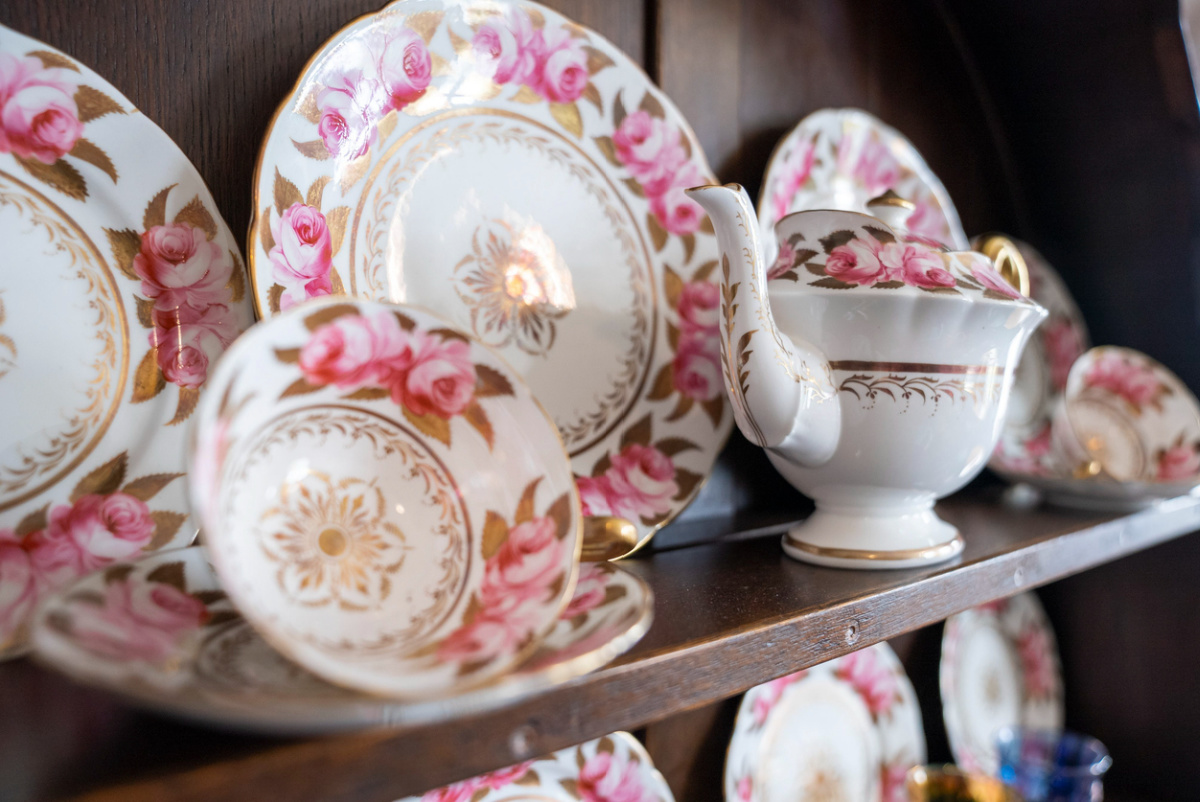“Southern Voices” is a reader-submitted series. Today’s personal essay comes from Brittany Shepard of The Sentimental Decorator, where she shares the art of sentimental style through home decor tips, family heirlooms, and rituals for joyful living.
**********
I never expected grief to show up in the china cabinet.
At first, it came in waves, the quiet kind. A flash of memory while folding linens. A lump in my throat when I unpacked the holiday dishes. After my mother passed away, I felt adrift in a sea of belongings that had once felt so anchored in her presence. What do you do when the people who made a house a home are gone, but their things are still with you?
For me, the answer was both practical and sacred: I started decorating. Not decorating in the glossy, Pinterest-perfect sense. There was no mood board. No rush to “finish a room.” Just a quiet desire to keep her near. To give her things a place. To give me a place, really.
At the time, I was living alone in a little 1956 cottage, far from the life I thought I’d be living in my thirties. There was no husband to help carry the emotional weight, no children to center holiday traditions around. Just me, my mother’s sweet dog, and a whole lot of heartache. But what I did have was a house, a blank canvas, and a growing collection of heirlooms tucked away in boxes.
My mama had a talent for creating warmth. She made even the most ordinary day feel like a celebration. I didn’t realize how much I’d absorbed from her until I began to unpack her treasured collections. They weren’t just objects. They were stories. Stories of her. Stories of me. Of holidays spent crowded around the table, of laughter echoing from the kitchen, and of traditions she carried out and held so dear.
I couldn’t bear to let those memories collect dust, so I started styling vignettes. Little moments of beauty on shelves, mantels, and side tables. And each one was anchored by something of hers. A framed photo of her as a child, smiling with a bow in her hair. A Jim Shore bunny figurine that she adored. Her Longaberger basket collection, now displayed in my kitchen like still-life art.
With every object I placed, I felt like I was building a bridge between what was and what could still be. It wasn’t just her things I incorporated. I found myself drawn to vintage stores and estate sales, searching for pieces that reminded me of the women who raised me — a dish pattern like my grandmother’s, a set of brass quails like the ones I used to play with in my great aunt’s living room.
These “adopted heirlooms,” as I’ve come to call them, carry a quiet familiarity. They feel like home.
What surprised me most was how the process didn’t just soothe my grief; it helped me reclaim my voice. For the first time, I wasn’t trying to decorate a home to impress anyone or to look like what I saw in the latest magazine. I wasn’t waiting to be married or to move into my “forever house.” I was creating beauty just for me. Making space for memory, for healing, for joy.
And in the quiet of those decorating moments, when the house was still and the light came in just so, I began to feel something I hadn’t felt in a long time: peace.
Now, years later, “sentimental style” is the very foundation of my home. Even though I’m not in that little cottage anymore, I’ve carried what I learned during that time of grief with me.
I’m in another 1950s charmer that I’ve gotten to personalize with sentiment and stories. The kitchen cabinet hardware is leftovers from when my parents built our home in the early nineties. The dining room chandelier, table, and chairs are the same combination that hosted many family dinners at my grandparents’ house. The guest room’s twin antique bedroom set is the same beds I had in my room as a child.
It’s not perfect. It doesn’t follow trends. But every room tells a story, and every shelf holds a connection. There’s comfort in knowing that even though I lost my mother, I didn’t lose everything. Her legacy lives on in the rituals I keep, the meals I serve, the way I fluff the throw pillows and light a candle at the end of the day.
Grief has no roadmap. But for me, decorating became a quiet kind of therapy. A way to move through sorrow with intention, tenderness, and just a little bit of Southern charm. I will never stop missing her. She was my best friend, after all.
But now, when I look around my home, I don’t feel the ache of what I’ve lost. I feel the richness of what remains. I see my mama everywhere — in her antique settees that I had reupholstered. In the brass candlesticks I use on my Christmas table. In the chinoiserie vases I dry my limelights in every year. And in that same sweet pup that still sits by my side.
If you have a story of your own to tell, you can find the guidelines for Southern Voices submission HERE.
**********
Discover more amazing Southern people and places. Follow us on Instagram!



















